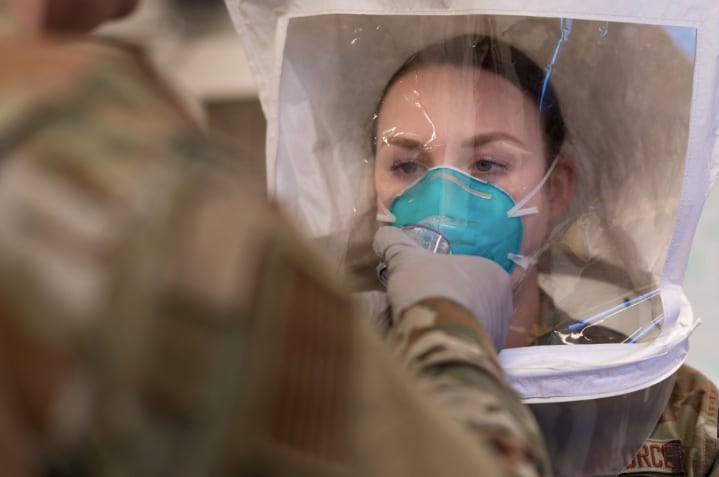As travel bans and shelter-in-place orders spread throughout the country, the military is facing an uphill battle containing the spread of COVID-19 within the force. With more than 200 cases among active duty troops as of Wednesday, the services have a 175-per-million infection rate, versus the 135-per-million rate in the U.S.
So calls to get back to work and start lifting quarantine policies could be premature, the Joint Staff surgeon told reporters Wednesday.
“Everybody keeps asking, what’s going to happen in two weeks, what’s going to happen in three weeks? We don’t know,” Air Force Brig. Gen, Paul Friedrichs said. “What we don’t want to do is build either a false sense of anxiety or concern, or a false sense of security.”
While the Defense Department has been modeling outcomes for its medical capacity, strategizing about what needs to be preserved for the force and what can be farmed out to back up civilian public health agencies, the spread of the virus itself is moving too quickly to predict how many troops will eventually be infected ― in the face of one a worse-case Centers for Disease Control and Prevention scenario that showed at least half of the U.S. population coming down with COVID-19.
In the military, Friedrichs said, its unclear what is causing the increase rate over the general population.
“I’m honestly not sure,” he said. “You would think that we would see a lot of cases in Korea, because that was one of the earlier hot spots ... we’re not seeing a lot of cases there.”
Though some of DoD’s first cases originated in the Daegu, South Korea, area, their trends are on the downswing.
RELATED

“Part of what we may be seeing is the increasing availability of testing,” Friedrichs said, as more DoD labs open up and more service members come forward with symptoms.
But to his mind, Korea is a good news story in that they’ve started to turn their rates around.
“This is incredibly difficult and I don’t mean to minimize it in any way, but their measures have been effective and they’re beginning to see the impact,” he said, measures like sheltering in place and mass testing.
In recent days, President Donald Trump has said he’d like to see the economy get moving again, putting people back to work by Easter. But Friedrichs said, in his medical opinion, that the military is not out of the woods yet.
“We think that we’re going to continue to see this – no surprise – continue to grow,” he said. “I don’t think there’s a great deal of value in speculating on a particular date.”
And further, lightening restrictions before enough time has passed to see them actually make a dent could be disastrous.
“If we stop doing the right thing today because we think something’s going to happen in four weeks, we will make this worse,” he said.
Meghann Myers is the Pentagon bureau chief at Military Times. She covers operations, policy, personnel, leadership and other issues affecting service members.





